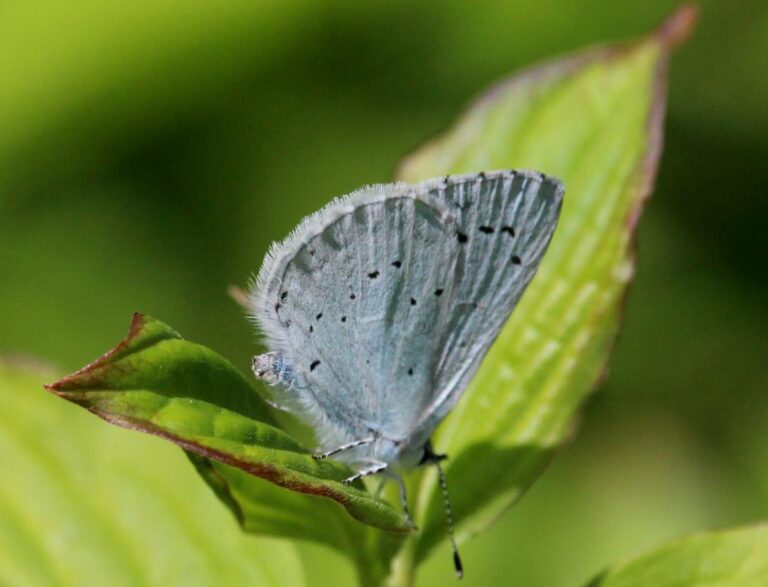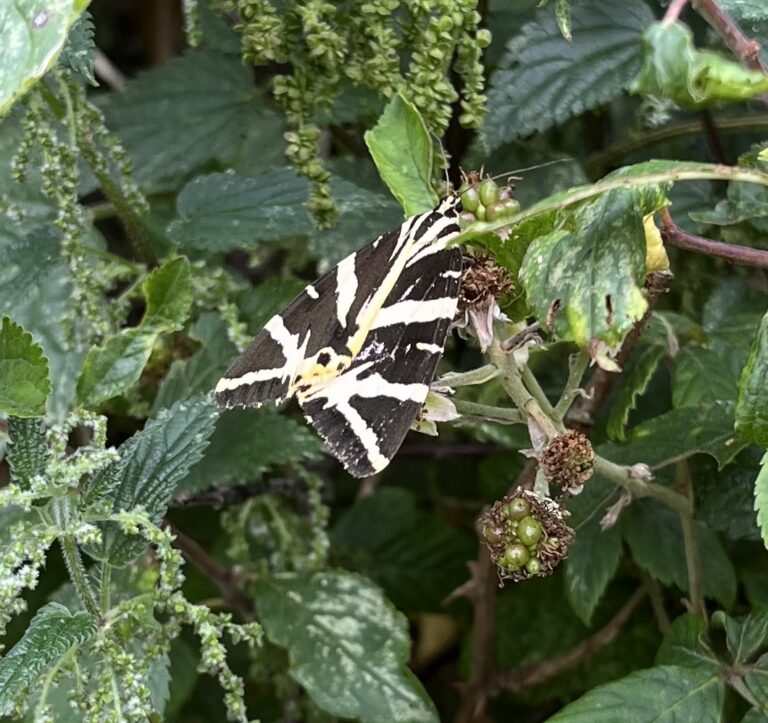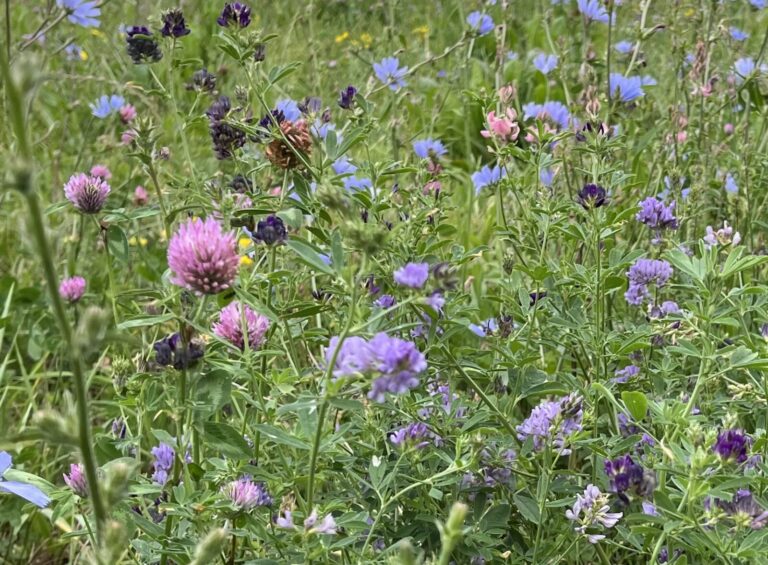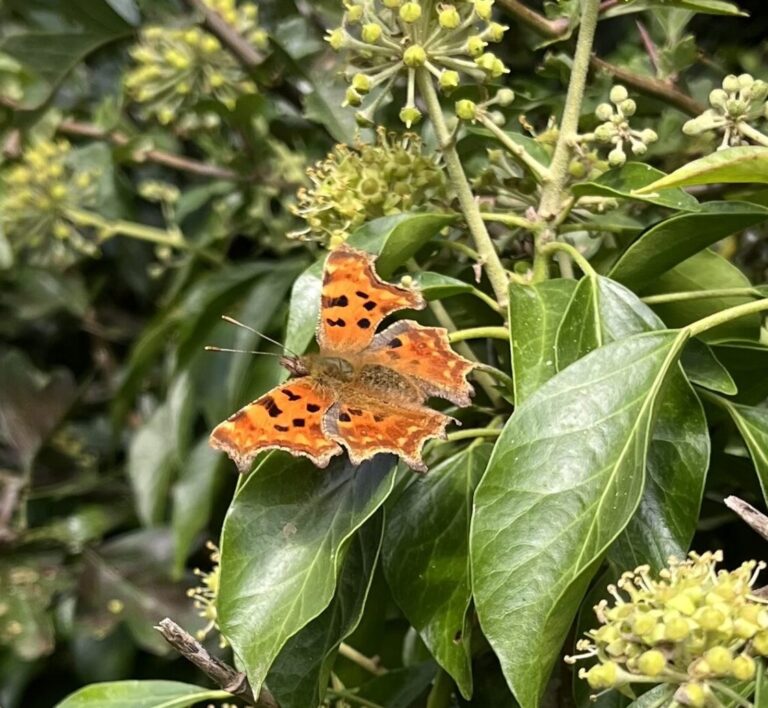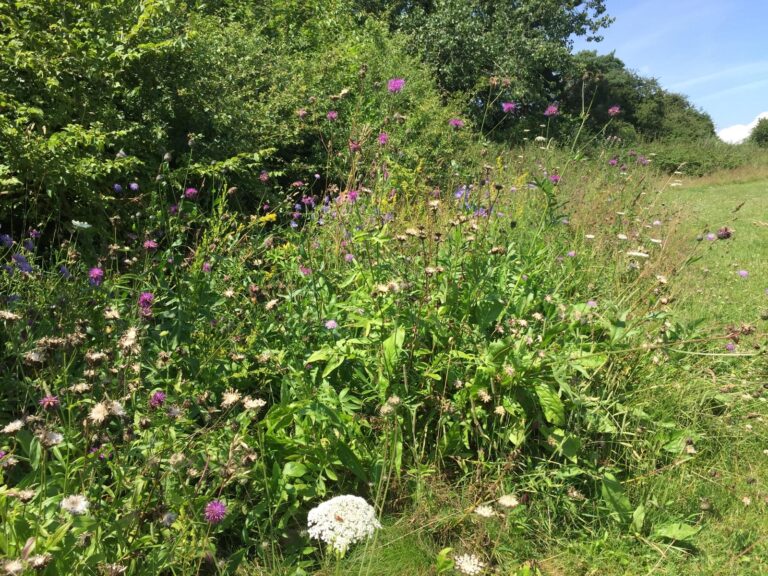Melene shares her butterfly observations from 2024.
Little did we know when a Red Admiral emerged from our garage in March that the Big Butterfly Survey results would be underwhelming with fewer surprises. However we did add quite a few spots to the map where they were clustered at particular places. Groups of Speckled Woods roamed the bushy or shady edges we expect them and Holly Blues too so maybe their woody habitats protected them from the weather. It felt like we were seeing more butterflies such as the Whites after the survey so we carried on recording in case it was wanted.
Our best sightings in the town this year have been in the Chyngton Lane bridlepath where the double hedgerows sheltering us were enabling the butterflies to be active on blustery days. It has been a challenge to find enough shelter for a daily stroll but here we spotted a stunning Jersey Tiger moth with flashes of vivid orange underwings before it landed on the shady side of the hedge. Perfectly camouflaged as usual with its tiger stripes concealing the almost luminous orange. This was on the 3rd August near the kissing gate at the north end and again every time we visited a different section of this green lane down towards Chyngton Farm .
It was still a rewarding walk in late September when a dozen Red Admirals and a Comma appeared when the Ivy began to flower and more species were on the largest Buddleia near Hythe Close twitten.
The footpath from Cradle Hill Rd also had butterflies between the Poplar trees corner and the double hedgerows but fewer species than usual eg Painted Lady was missing.
Princess Drive main green had most of the butterflies on the east side rather than on the usual sunny side between the double hedgerows in the old lane of Grand Avenue.
Valley Dip playpark hedgerows at the top and by the green above it also had a good cluster of butterflies.
In Blatchington churchyard Holly Blues had plenty of their caterpillar food plant and Speckled Woods had dappled shade all around. By contrast, St Leonard’s churchyard attracts the butterflies and moths of the sunny grassland flowers Knapweed and Ladies’ Bedstraw In late summer.
Chalvington Field has previously had the largest numbers on its flower margin but this year we saw no more than the number you expect in a flowery garden.
We hardly noticed Gatekeepers and Meadow Browns, Painted Ladies or Peacocks and at home we did not have the usual daily visit of a Comma basking on my knee or the annual visit of a Hummingbird Hawkmoth, nor a group of Red Admirals on our Ivy. However 2 Red Admirals did bask in November in a brief shaft of sunlight, the slope down to the edge of Blatchington pond was enough shelter at ground level for a Common Blue on a blustery day, a Marbled White was in the Pump field.
So would we have seen more if we had toured every site on the hottest days ?
Do let us know if you found a place within the town where perhaps 8-12 butterflies lingered most of the day. This is the minimum number of Meadow Browns or Gatekeepers the Wildlife Club at Seaford Primary used to record after a bank was planted with Scabious and Marjoram.
Melene
